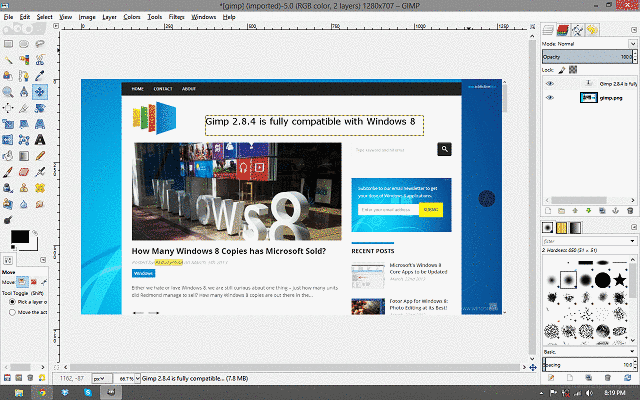

In addition, GIMP's active community of user/developers has created a wide range of plugins. However, GIMP comes with a few dozen plugins, such as those in the Filters menu. Unlike most photo editing programs, GIMP doesn't support the many third-party Photoshop-compatible plugins. In fact, a large population of user/developers continues to explore and invent new extensions to GIMP. What sets GIMP apart is that it’s open-source and easily extensible - or at least it's easy for those who know how to code. MORE: How Many Megapixels Do You Really Need? An Extensible System For instance, the revised Text tool works directly on your picture rather than in a separate window, with control over font, size, color, alignment, baseline offset and kerning. With the recent major revision, GIMP has made nice improvements to bring the program more in line with competitors.

Of course, being GIMP, the layer groups are scriptable via a plugin API. What's more, layers can now be organized into groups. On the other hand, it has a very nice "open as layers" command, which places a photo into a layer of another image. Although GIMP has layer masks, it doesn't have adjustment layers. In addition, GIMP goes far beyond the basics to give you the controls for some rather advanced editing, such as channel manipulations.


 0 kommentar(er)
0 kommentar(er)
